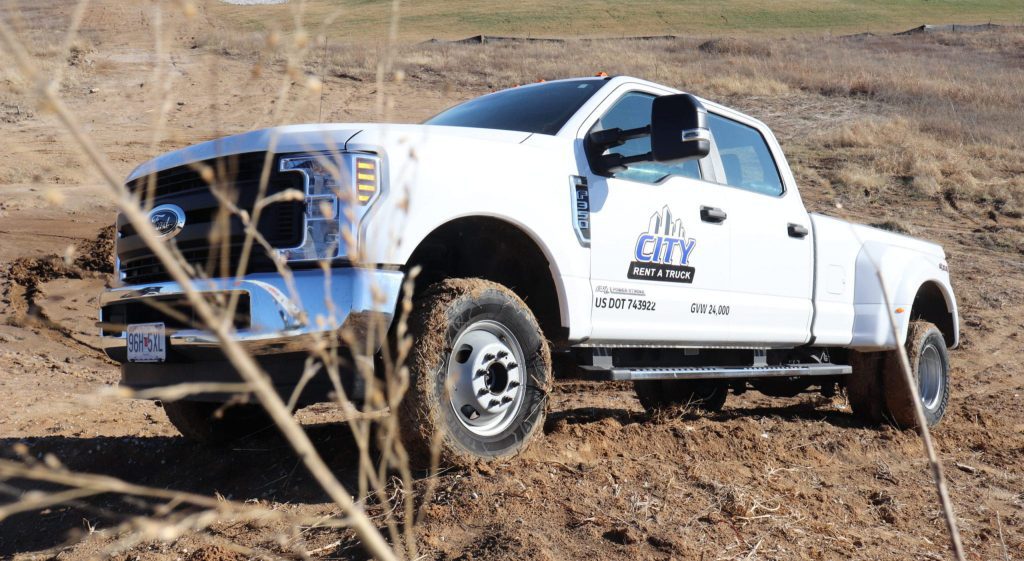
Supercharge Your Fleet Management Strategy: Four Building Blocks for Success
Sometimes circumstances make our tough jobs even tougher.
This is certainly one of those times, as fleet managers are being hit with sharply higher costs in almost every part of their work — from vehicles and fuel to wages and insurance.
On top of rising expenses, fleet managers are dealing with the added pressure of being on the tail end of the supply chain crunch. When materials and supplies finally show up, it’s now even more important than usual to keep them moving quickly on to job sites and production facilities or out into the marketplace.
In the face of these challenges, we’re here to help you take a closer look at the fundamentals of your fleet management and find insights to supercharge your work.
We’re offering you our Four Building Blocks for Success in Fleet Management as a 2022 guide for solving problems such as not being able to bid on jobs because of a diminished fleet or figuring out what to do with vehicles that aren’t generating revenue.
These four building blocks are a smart foundation for fleet managers, fleet coordinators, and project managers looking to leverage their fleets in a way that maximizes efficiency — without minimizing results.
Use these as a starting point for your fleet management strategy!
BUILDING BLOCK 1: EFFICIENCY
Control Costs: Aim for 100% Fleet Utilization
100% fleet utilization is the practice of tracking your inventory, reducing idle times, and supplementing where necessary. At City Rent a Truck, we call this “right-sizing your fleet” so you’re only paying for the vehicles you need.
Here are a few ways to do this:

Remember: Renting can offer massive benefits when it comes to fleet utilization. From making your fleet more dynamic to having the ability to say yes to a project without a vehicle in place, there are a lot of benefits associated with renting your fleet.
Boost Operational Efficiency: Know Your Numbers
The best way to get yourself started on the path toward optimal operational efficiency is to start monitoring all the costs associated with operating your fleet.
From fuel to depreciation, every little bit counts in this area. Start by recording your numbers, understanding where you stand, and giving yourself a foundation for change. These are our favorite fleet metrics that you should start tracking and why they’re important.
Once you see where you’re spending money, you’ll be able to start trimming back. Eventually, that will lead to the ability to right-size your fleet with the exact number of vehicles you need.
For more on Efficiency: click here

BUILDING BLOCK 2: MAINTENANCE
Perform routine checks
As a fleet manager, it’s your responsibility to ensure that your vehicles perform the way they should.
The best way to do this is to stay on top of your routine inspections. Being proactive instead of reactive can save you time, money, and headache in the long run, so implement routine maintenance now before it’s too late.
Creating a maintenance checklist is an excellent step to take. Start with the following:
OIL CHANGES EVERY 4,000-10,000 MILES
REPLACE TIRES EVERY 25,000-50,000 MILES
CHANGE AIR FILTERS WHEN DIRTY
WASH VEHICLES REGULARLY
From there, you’ll be able to add and subtract things as necessary to create a vehicle maintenance checklist that makes sense for your business structure.
Want more?
Check out this blog for our favorite tire maintenance tips and tricks!
BUILDING BLOCK 3: SAFETY
Driver Management: Improve Driver Safety and Efficiency
Your boss is going to look to you for hiring, firing, and training your drivers. Drivers who are safe and smart when on the road can not only avoid costly accidents, they can also impact your bottom line as well.
The difference between the most and least efficient drivers could be as high as 30% when it comes to performance and cost.

After diving into your numbers in step one, you’ll see how vital 30% is. We highly recommend implementing a training program that goes over standard driver safety topics, including no texting and driving, wearing a seatbelt, and paying attention. We also recommend that you talk about the parts of driving that are important to your business operations, such as:
For more on Safety: click here
- Accelerating Steadily: Aggressive driving can lower highway gas mileage by up to 33%.
- Brake Slowly: Hard braking can cause brake damage and lower brake lifespans.
- Slow Down: Driving at 55 mph saves 28% more fuel than 75 mph.

BUILDING BLOCK 4: COMPLIANCE
Stay on Top of Legal Compliance: Check Off Clerical Work
Paperwork isn’t fun, but it is a necessity. As a fleet manager, you’ll be the head honcho in many of these areas, so you must understand the legal and compliance rules associated with fleet management.
Some things to keep in mind include:
Are you in compliance with the Department of Transportation rules in your state?
City Rent a Truck takes care of DOT on all of our vehicles so you don’t have to.
Do your drivers have the appropriate training and licenses for the vehicles you want them to operate?
Most City Rent a Truck vehicles are rated under 26,000 lbs GVWR, meaning you do not need a special license to drive them. We also offer some heavy duty trucks with GVWR's up to 66,000 lbs for bigger jobs!
Are you up to date on all your payments?
One major benefit of renting through us is you forgo the cost of ownership including but not limited to property taxes on each vehicle.
Is your fleet adequately maintained?
City Rent a Truck schedules regular maintenance on all of our vehicles, and will cover general maintenance on all long term rentals and leases.
Are you covered how you should be?
City Rent a Truck offers several optional insurance policies that take the liability off your hands.
If you’re worried about this side of your job, you should consider creating an internal audit plan. Whether it’s quarterly reviews of your compliance from an internal team member or hiring an outside company to audit your organization, this can help keep you on your toes and in the loop on any legal changes that may impact your business operations.
For more on Compliance: click here
With these Four Building Blocks for Success in Fleet Management in your back pocket, you’ll be able to hone your strategy for success in the tough business environment we find ourselves in this year.

